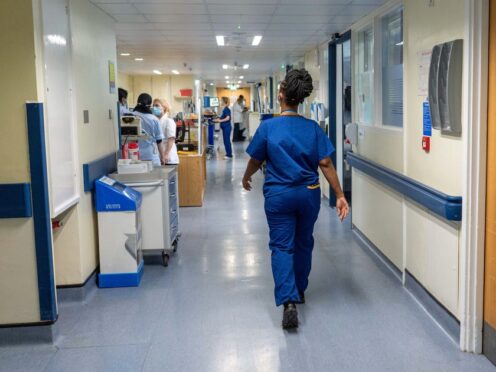The winner of the General Election should pass an emergency budget to “fix” healthcare, Liberal Democrat leader Sir Ed Davey has said.
It comes after poll frontrunner the Labour Party ruled out a snap fiscal event in the first few weeks of the next parliament.
The Lib Dems want to see a budget which would be “much more targeted in scope than a normal budget”.
To coincide with Sir Ed’s demand, the party asked a series of NHS Trusts about the longest waiting times for patients aged 65 or over.
One patient waited 10 days – 240 hours – before being admitted by Cumbria, Northumberland, Tyne and Wear NHS Foundation Trust.
In East Kent, a trolley wait of 124.8 hours (more than five days) was identified, and there was a 118.2-hour wait in Lewisham and Greenwich, London.
Sir Ed said: “The NHS is on its knees, leaving people waiting hours for an ambulance, weeks to see a GP and months to start cancer treatment.
“There is no time to waste to fix local health services on the brink and tackle long NHS waiting times that are leaving people in pain and desperation.
“Whatever the outcome of this election, Liberal Democrats are demanding an emergency health budget as soon as Parliament returns.
“Every Liberal Democrat MP elected will be a strong local champion fighting to rescue our health service after years of Conservative neglect.”

Early on the campaign trail, Labour’s shadow chancellor Rachel Reeves said: “I’ve been really clear that I would not deliver a fiscal event without an OBR (Office for Budget Responsibility) forecast.”
The chancellor usually gives the watchdog 10 weeks’ public notice of a budget, according to a memorandum of understanding between the OBR and the government.
But the document clarifies that the 10-week window – which after the vote on Thursday July 4 would push the next budget back until at least September – is “in the absence of exceptional circumstances”.
The Lib Dems said their manifesto pledges a £9.4 billion spending package for the NHS, healthcare and social care.
The party has pledged to pay for its plans, if it can form a government, by reforming capital gains tax, adjusting rates for what it has termed the “super-wealthy” while increasing the tax-free allowance from £3,000 to £5,000.
Adjusting Bank Surcharge and Bank Levy revenues to 2016 levels could raise £4.3 billion a year by 2028/29, the Lib Dem claim.
In addition to her pledge not to set the next budget without an OBR forecast, Ms Reeves pledged a windfall tax on oil and gas firms and adding VAT to private school fees, but ruled out hikes to general VAT rates, national insurance and income tax.
A Conservative Party spokesperson said: “A vote for the Liberal Democrats is a vote for an unaccountable Labour majority.
“We know from Labour-run Wales what that would mean – cuts to the NHS budget and the longest hospital waits in Britain.
“Under the Conservatives, NHS waiting lists are falling at the fastest rate in a decade outside the pandemic, there are record numbers of doctors and nurses, and our community diagnostic centres are delivering millions more tests, scans and checks every year.”
